Final Project
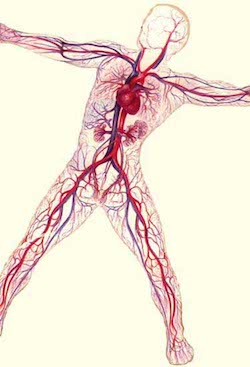
The Circulatory Train - A Transportation System
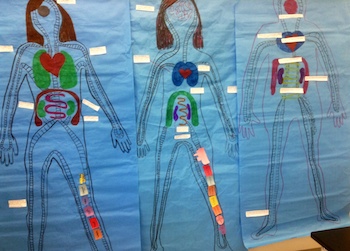
The "old" iteration of this project.
Applications and Implications
- What does it do? This project meets Next Generation Science Standard MS-LS1-3 From Molecules to Organisms: Structures and Processes. "Use argument supported by evidence for how the body is a system of interacting subsystems composed of groups of cells. Emphasis is on the conceptual understanding that cells form tissues and tissues form organs specialized for particular body functions." This project also provides educational opportunities to illustrate to middle school students how the machines of Fab Lab are the avenues to understanding and making the future.
- Who's done what beforehand? Historically, my students have traced each other on sheets of paper, drawn train tracks, and labeled the various organ "stations" and drawn a train of cars carrying the components of the blood exchange.
- What did you design? I designed a more enduring version of the circulatory system as a transportation system which should serve to illustrate the concept but also provide a springboard toward other student-created models of body systems.
- What materials and components were used? plywood, vinyl, 3-D plastic filament,'328-equipped Arduino model, Adafruit Wave Shield for Arduino, FAT16 formatted SDCard, LOLs
- Were did they come from? local hardware store and lumber supply store, Haystack Fab Lab, http://www.adafruit.com/products/94
- How much did they cost? Thus far, $25 for the sheet of plywood, $8.49 for the white primer.
- What parts and systems were made? train board, body organs, signage, train cars, signal mechanism
- What processes were used? vinyl cutter, ShopBot, 3-D printer, Arduino website
- What questions were answered? How can I integrate the various Fab Lab capabilities into one project? How can I connect my students to the ever-expanding world of technology? How can I create a concrete illustration of a concept which makes that concept forever memorable?
- How was it evaluated? Will this project prove engaging to my students - will they give it more than a ten second glance? Will this project prove inspiring to my students - will they be willing to expend their own brainpower adding to the circulatory train and developing similar Fab Lab body systems? If the answers to these question are "Yes", then I will know I have succeeded.
- What are the implications? The implications are classroom innovation, more engaged, more active learning, increased student motivation, and research performed in a creative, customized way. So much of the Next Generation Science Standards begin with the phrase "develop a model...." This is the ultimate development of a model. The Engineering, Technology and Applications of Science Standards are sometimes difficult to address in the middle school classroom. Fab Lab is an avenue to knowledge, not just for adults. Quoting an article in edSurge on Makers in the Clssroom, "Making...engages students’ hands in the work of their minds in order to help them construct deep conceptual understandings."

The old train.

The new body.
- Vinyl cut title: The Circulatory Train - A Transportation System
- Obtain 6 feet X 4 feet piece of 1/4 plywood
- Engrave gingerbread outline of human body with Shopbot, paint body and background, affix title
- "Important" stations: lung, heart, brain, kidneys, large and small intestines, body cells
- Create station signs with laser cutter or vinyl cutter?
- Create organs with 3-D printer (heart, lungs, kidneys, brain)
- Create and label train cars with 3 D printer (oxygen, carbon dioxide, food, waste, water)
- Vinyl cut sticker or laser cut cardboard for intestines and stomach
- Program so that railroad sign is lit and rings as train passes the various stations (“Oxygen Dropped Off,” “Carbon Dioxide Dropped Off,” “Food Dropped Off,” "Waste Dropped Off," "Water Dropped Off," “Waste Picked Up,” "Oxygen Picked Up," Carbon Dioxide Picked Up,""Water Picked Up"). The sign might be a LOL, Lots of LEDs.
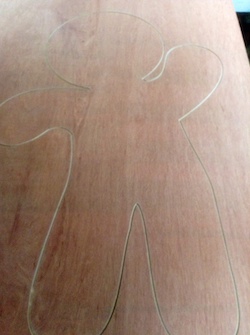
My plans for the circulatory train have reversed themselves. I have decided the train track should encompass the figure, not traverse the inside of the figure. The organ stations themselves will have vinyl cut labels (not the white background). I will design and 3-D print the heart as that is the most important organ in this particular model. Other organs can be created 3-D in the future by my students.
I brought my board to school and my seventh grade was an extremely appreciative audience and especially enjoyed the painted brain. We discussed what should happen as the train nears each organ station. My current plan is to have an LED board light up to display what commodity is picked up or dropped off. The students suggested an actual commodity enter or leave the train cars.
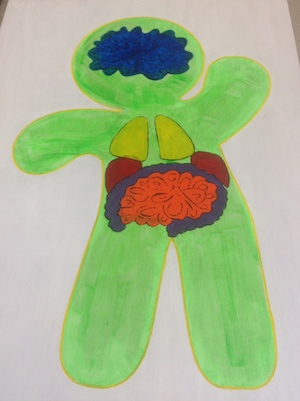
Arduino Code, first iteration
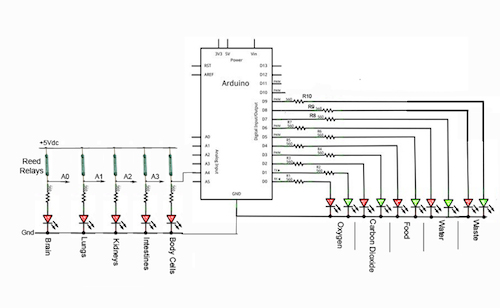

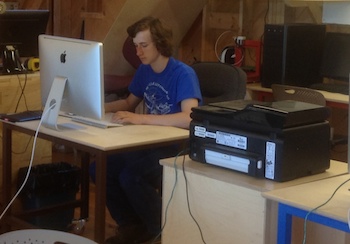

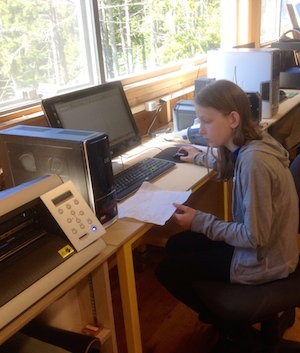
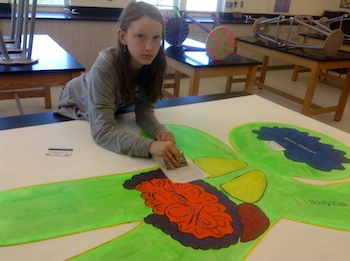
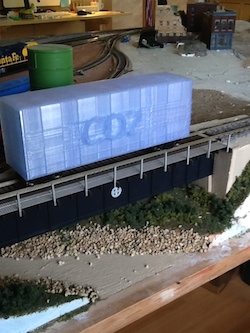
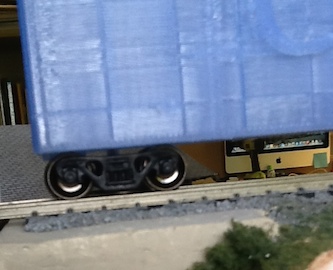
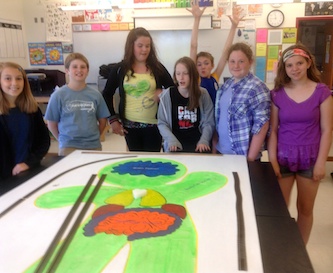
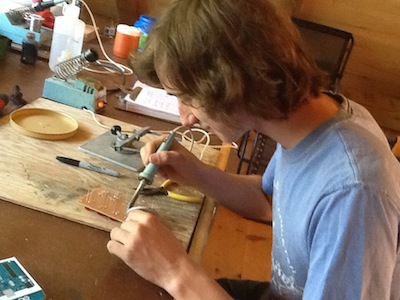

Mickie Flores Home